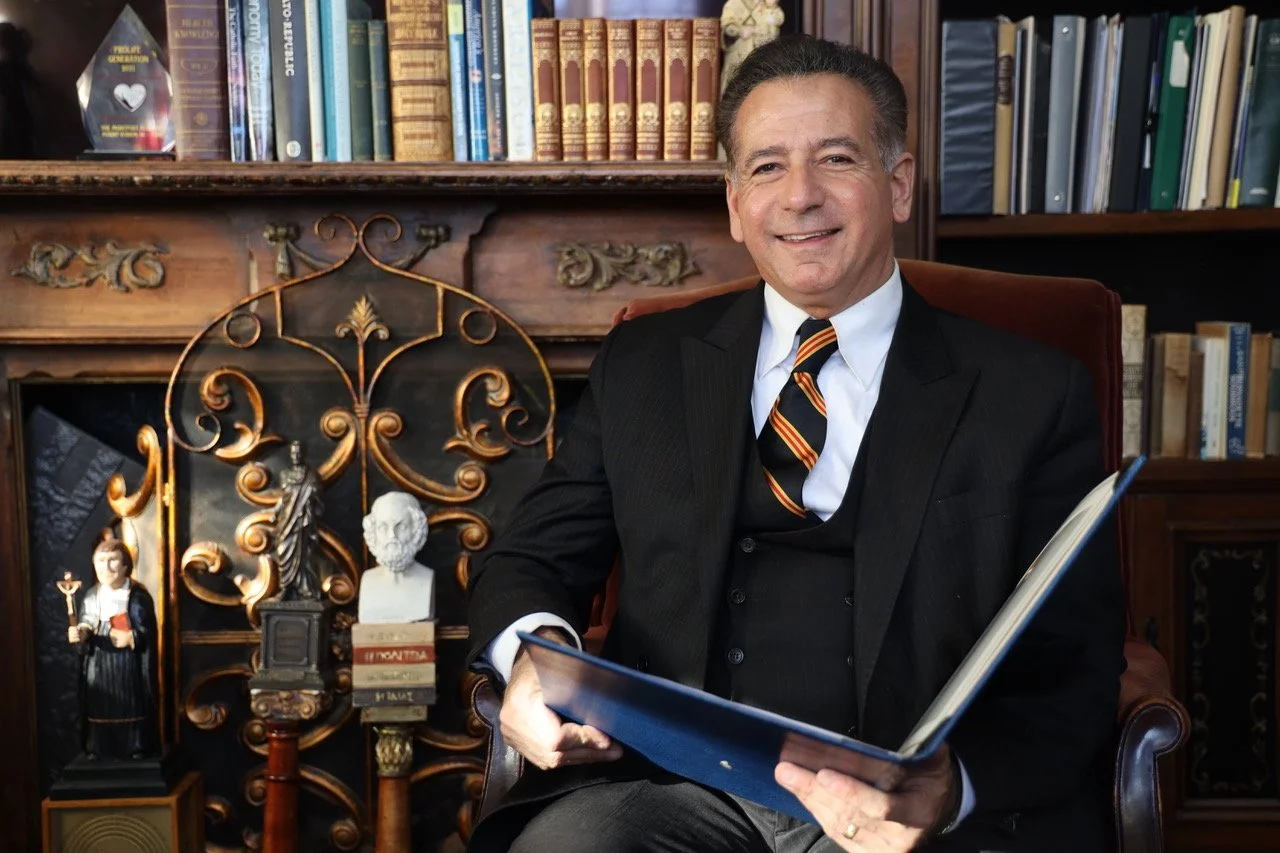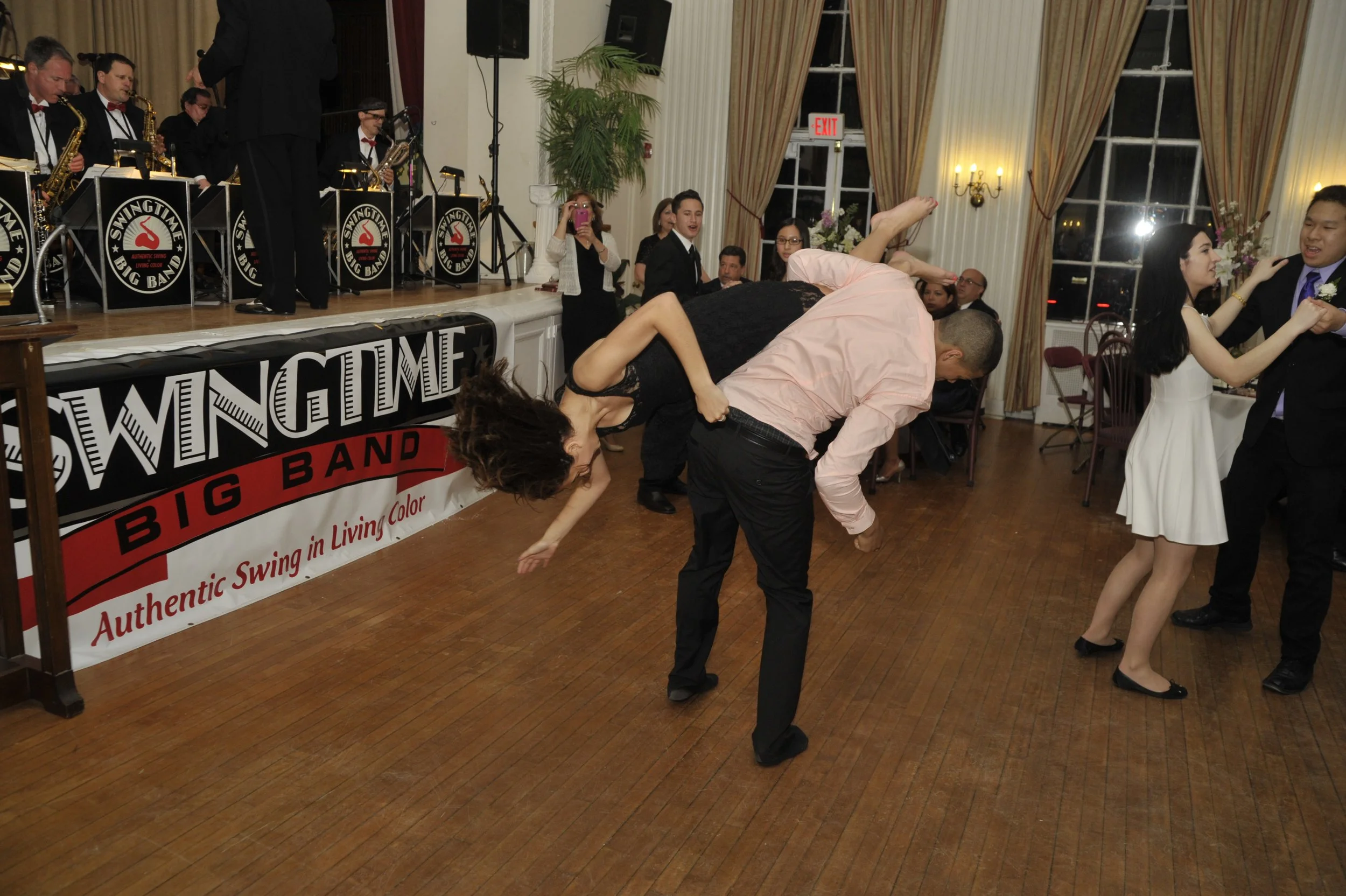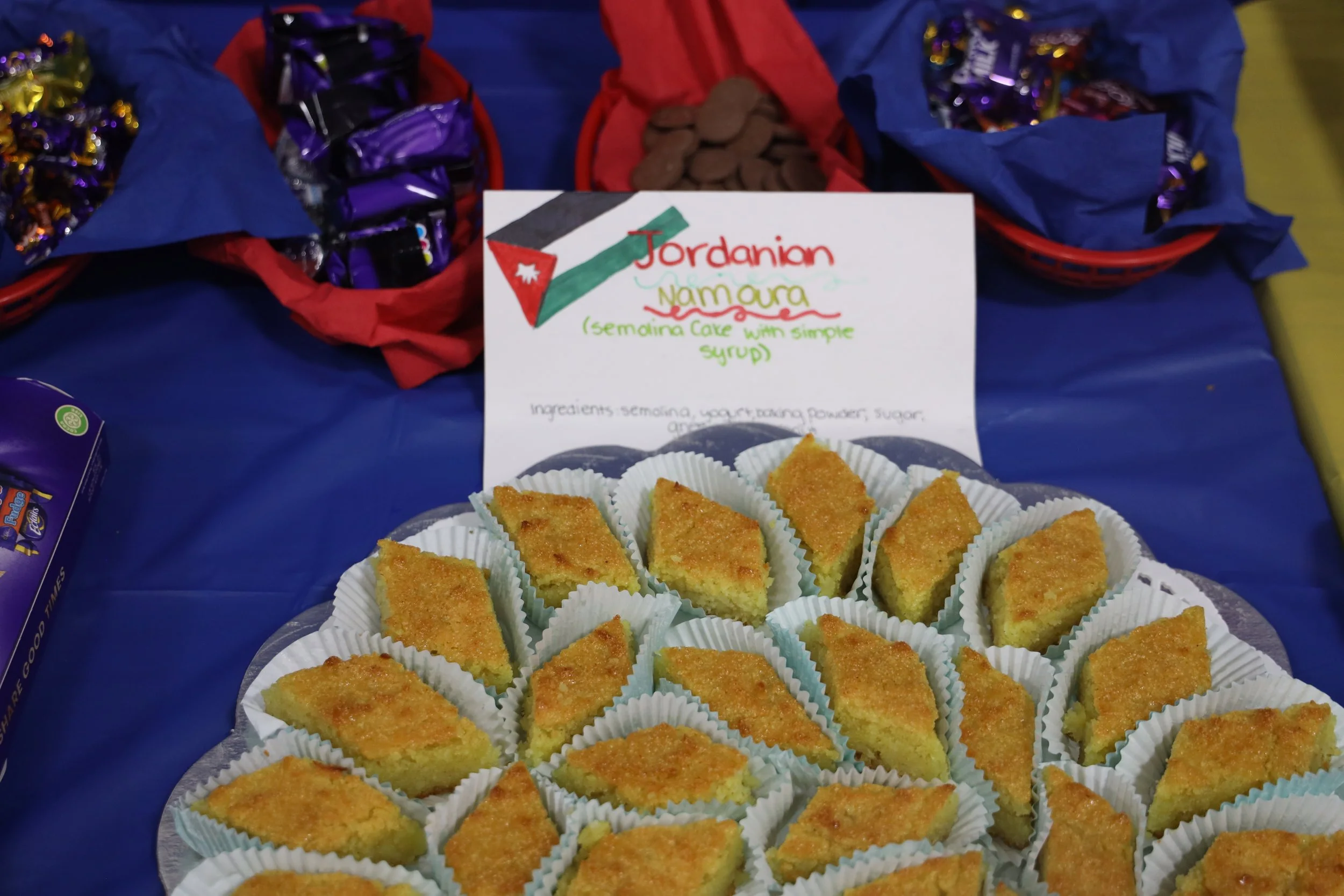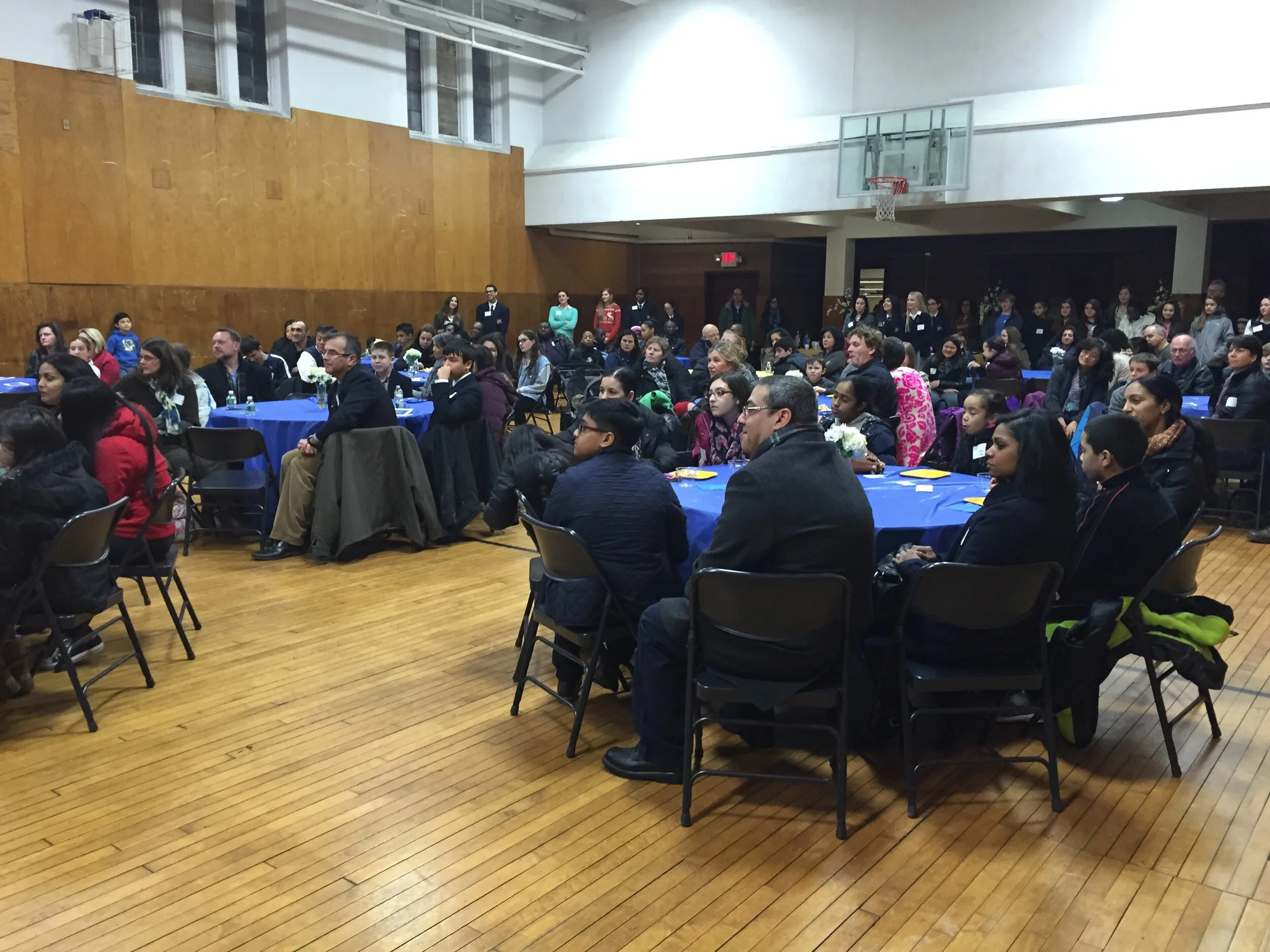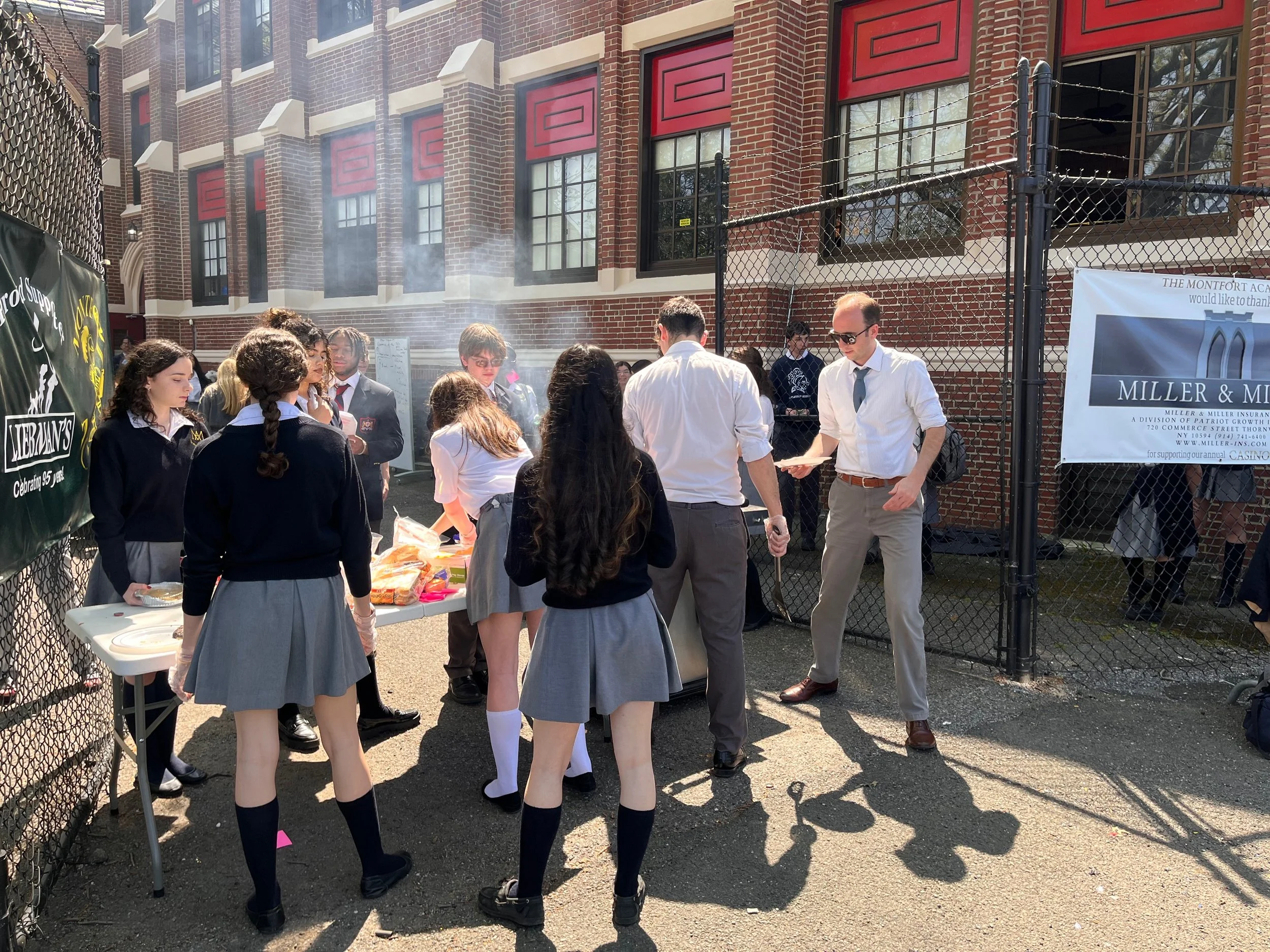Montfort Traditions
Traditions are what unite a community of common belief, common experience, and common goals and ambitions. Tradition is what allows the present to be connected to the past and the future to be connected to the present. Tradition is the transmission of customs from one age to the next. From our handsome school uniform to our Mascot the Knight, from our daily morning, noon, and afternoon prayers to Mass on Tuesday and Holy Hour on Thursday, from Spirit Week in October to our Ring Ceremony in May, Montfort is full of traditions. Below are just a few of our most cherished traditions that unite Montfort Knights no matter where in the word they are or no matter what era they are from!
Convocation And Our Alma Mater
The entire faculty processes into the Church, led by the Academy’s Ceremonial Mace. The President then thumps his hand-carved wooden cane capped in blue and gold enamel on the floor of the Church three times to officially inaugurate the new school year. After the Convocation Address, a speech to open the new year, the whole school sings the Alma Mater and takes the Oath of the Montfort Knight.
Convocation 2024: Friendship With Christ
Convocation 2021: Serviam, I Will Serve
Convocation 2020: What Anchors You?
September 11th Ceremony
Every year The Montfort Academy has commemorated the September 11th attacks on America on Patriots Day. Our ceremony is simple: we retire the American flag that was raised on the prior September 11th. The new flag we raise is always a gift of the most recent graduating class. A recording of our ceremonies can be found on our YouTube Channel.
Swing Dancing
Montfort Knights know how to swing and have fun! Swing dancing at Montfort was inspired by a massive Swing Dance in Milan, Italy in an old jai-alai court, attended by thousands of people, in 2011. Since then, Montfort Knights have “swung” at the annual gala to the music of a 16-piece orchestra, the Snow Ball, the Halloween Masquerade Party, and at dedicated Swing Nights.
International Night
Montfort is ranked the #1 most diverse private high school in Westchester County. With students from more than 50 ethnicities, it is no wonder why. At International Night, students and families enjoy food, desserts, and entertainment from all these rich backgrounds, along with various ethnic entertainment, including Irish bagpipes by our very own Mr. O’Sullivan and Ukrainian Folk Dancing.
Open Mic Night
What fun for our students just to show up and sing, recite some lines, perform a comedy routine in front of candle-lit tables full of Montfort Knights. This is uniquely Montfort.
Ring Ceremony
Each year in May, in a beautiful outside Class Ring Ceremony, the President of Montfort, Richard Greco, Jr., pledges Montfort’s love and fidelity to her Juniors, who are rising Seniors, by placing their class rings on their fingers. Mr. Greco asks the question, “Serviesne” “Will you serve?” and Montfort Knights respond with their pledge, “Serviam,” “I will serve.”
Richard Greco,Jr. leads the annual Junior Ring Ceremony
March For Life
For more than 20 years Montfort has sent up to two busses full of students to the annual March for Life in Washington, DC. It is great way for Montfort Knights to express their deeply held beliefs about the sanctity of all human life from conception to natural death. Even after the overturn of Roe v. Rade, The Montfort Academy will continue to march in this parade in support of all human life.
Spirit Week
Great Montfort Knight spirit abounds during Spirit Week, when all the classes compete for the best decorated hallway and the most class spirit. The week features food trucks, outdoor barbecues, scavenger hunts, tug-of-war, doge ball, field day, game day, and so much more. Spirit Week culminates with a series of Olympic games at the end of each day and on Friday of Spirit Week.
Annual Trip To Italy
For nearly 20 years Montfort Seniors travel to Italy. This trip has taken students to Sicily, Calabria, Naples, Pompeii, Sorrento, Amalfi, Rome, Montecassino, Norcia, Assisi, and Siena. Students have participated in archeological excavations, performed dramas in amphitheaters, picked bergamots in orchards, made ricotta cheese straight from milk, and so much more. Four years of their classical curriculum come alive.
Commencement
Finally, Commencement, with the pageantry of a centuries old, storied institution. We may be young still, but our traditions reach way back in time. Our President The Honorable Richard Greco, Jr. leads the procession in his academic robe and chain of office, while the Dean of Students carries the Ceremonial Mace.
Our Commencement features not only the pageantry of an academic procession of caps and gowns, not only Valedictory and Salutatorian Addresses, but also an Oration in Classical Latin and a Rhapsody in Ancient Greek. The speeches are followed by the annual reading of college placement and the conferring of diplomas.
Please see our College Admissions Page for videos of the last eight years of graduation ceremonies.
Dinner Theater
Our principal annual fundraiser is a Dinner Theater. The school is transformed to host sumptuous Cocktail Hour and Dinner, followed by our Spring Musical. Dinner Theaters have included Guys & Dolls and The Sound of Music. See our Theater Page for video clips of our Theater Performances.
The Alma Mater
Photo of the Knight comes from the Metropolitan Museum of Art's current exhibit on Maximilian I, Holy Roman Emperor and "The Last Knight."
Watch The Montfort Academy faculty process and sing the Alma Mater, Glory of the Blue and Gold. Words by Chris Bratt, Music by Karen Hanley.
Click on the photo for a youtube video from graduation 2018, when the ceremonial mace was presented to the academy.
The Montfort Academy Ceremonial Mace
Having origins deep in medieval academic traditions, the ceremonial mace was first used in ancient times in courtly processions when a marshal would carry a mace as a weapon to protect the king or person of authority walking directly behind. In the universities of medieval Europe, the mace was adapted to academic ceremonies to protect the seal of the institution and to represent its authority to confer degrees. Today’s ceremonial maces are rich in symbolism and represent both the authority of office and the identify of the academic institution.
Montfort's mace has four components—a globe, an antique hand-crafted staff decorated in gold and silver; a classical Greek column of dark wood adorned with important Montfort symbols; and a brilliant gold flame sitting atop a royal blue torch. It is 68 inches high and weights 15 pounds, unusually tall and heavy for a ceremonial mace. Its height represents the hills of Katonah and Mt. Vernon, the two sites of the Academy’s history, and its weight is a reminder of the gravity of our mission at Montfort which is perfectly captured in the words of Aristotle: “All those who have meditated on the art of governing mankind have been convinced that the future of civilization rests with the education of the youth.”
The bearer of the mace is the marshal of the graduation ceremony, who is appointed by the president each year as a reward for distinguished service to the Academy. Upon termination of the commencement exercises, the mace stays standing at the vacant podium, a reminder to Montfort graduates that the pursuit of Truth does not end with the graduation ceremony but is lifelong and that the good habits of mind, body, and soul they learned at Montfort will always be there for them.
The Montfort Academy ceremonial mace was handcrafted by school founder and president Richard Greco, Jr.
The Montfort Academy’s ceremonial mace is a gift from school founder Richard Greco, Jr., who designed and constructed the mace in 2018 on the occasion of the 20th anniversary of The Montfort Academy’s incorporation in 1998. Mr. Greco said, “It is an honor and deep personal pleasure to present this ceremonial mace to The Montfort Academy. In a very profound way, this mace is a story pole not only of the Academy’s history and identity but also a large part of my history and identity. Yet, it is something much bigger than either me or the school; it is our collective history, the embodiment of our beliefs, traditions, toils, and aspirations. It is my hope that this ceremonial mace will lead Montfort processions for decades to come.” Please click on the words above for the video in which the ceremonial mace was inaugurated and blessed. Please also read below for a more detailed description of the mace and the deep symbolism of its components, representing the Catholic and Classical natures of The Montfort Academy.
The globe
The base of the mace is an antique globe representing God’s creation. It reminds us of an important aspect of Montfort’s educational vision—that by studying God’s created world one can know and grow closer to God the Creator Himself. It is into this created world that Montfort knights proceed upon graduation with confidence, formed in the virtues of wisdom, faith, hope, courage, and love. The globe is used when the mace is in procession. When the mace is in repose, the globe is removed from the the mace so that the mace can fit into its holder and stand in state.
The staff
This hand-carved wooden pole, is reminiscent of the miraculous rod of Aaron that protected the Israelites from the plagues in Egypt before the Passover and which is often used in art to symbolize the Shepherd’s staff of the Lord Himself in depictions of the Annunciation. The staff features three decorative gold rings which represent the Holy Trinity of God the Father, God the Son, and God the Holy Spirit. This Holy Trinity, who is One God in Three Divine Persons, is the font of all human knowledge and has revealed Himself to man through the ages. The three gold rings also symbolize Montfort's motto “Seek Wisdom, Practice Virtue, and Keep the Faith.” Wrapped around the staff in one continuous metalsmith’s work of art are 21 hand-engraved silver depictions of the Holy Cross, a Partridge in a Pair Tree, the Lamb of God carrying the flagstaff of the Holy Gospels, a Dove radiating the Holy Spirit, and other Catholic images. These silver reliefs are a reminder that Almighty God, who is Truth itself, is knowable through His divine revelation from the Old Testament through the New, through Apostolic tradition, and through the Magisterium of the Church. The staff is the very foundation of Montfort's ceremonial mace. Its wood, gold rings, and silver reliefs tell us that The Montfort Academy is first and foremost a Catholic school, and like the miraculous rod of Aaron, which was a simple Shepherd’s staff that foreshadowed the very Lamb of God, guides, protects, and transforms.
the column
Integrally joined to the staff through an internal wooden dowel is the body of the mace, a classical Greek column. Handcrafted in South Carolina of solid oak wood, the reeded column is stained in dark walnut as a reminder of the beautiful dark wood of Montfort’s Church, Hallway of Masters, and Hallway of Knowledge. The column is capped first with a minor Corinthian capital of gold, which in turn supports a four-sided block displaying The Montfort Academy’s crest, an image of the Blessed Mother holding the Child Jesus in her arms, a medallion of St. Louis de Montfort, and of course the Holy Corpus of Our Lord Jesus Christ. The entire column and block are capped by a large Ionic capital, hand carved in pine in Cornwall, England especially for The Montfort Academy. The column is mighty and weighty, a reminder of the gravity of our mission at Montfort which is perfectly captured in the words of Aristotle: “All those who have meditated on the art of governing mankind have been convinced that the future of civilization rests with the education of the youth.” Three equal rings of gold encircle the column and its minor capital. They represent the Trivium of classical education—Grammar, Logic, and Rhetoric. The minor capital supports the block whose four sides represent the Quadrivium of classical education—Mathematics, Astronomy, Geometry, and Music. Together, the Trivium and Quadrivium form the complete classical education, which was first described in chapter seven of Plato’s Republic as the perfect education. The column pays homage to the long-lasting contributions of the ancient Greeks and Romans to our cherished Western Civilization. It is a reminder that, as in the great tradition of the School of Athens, Montfort students participate in the Great Conversation and Socratic discussion of great ideas. Among the greatest of ideas from the Greeks is that truth is knowable by man through use of his reason; that same reason allows man to know the Good. Later, in the Middle Ages, that Great Conversation produced the idea that through faith and reason, working together, one can know God. The four-sides of the oak that represent the subjects of the Quadrivium also bear symbols and images that reach deeply into Montfort’s history. On the front facade is a gold medallion engraved with the crest of The Montfort Academy, which was designed in 1998, when The Montfort Academy was first conceived. The crest features two Flor de Lis flowers that represent the Blessed Mother, who is the Mediatrix of all graces and who has answered many of our fervent and urgent prayers and petitions over the years; two feather quills represent the high scholarship expected of all Montfort students; two flaming lamps represent the wisdom and knowledge that all Montfort students aspire to attain; two lions represent bravery in our continuous lifelong pursuit of the Truth; and of course the Cross, which is the ultimate Truth that God became man to save us from our sins. The crest is embellished with a scroll held by the lions’s feet engraved with the Montfort’s official motto, “Instaurare Omnia in Christo,” which means “To restore all things in Christ.” When His Eminence Timothy Cardinal Dolan visited Montfort in March 2017, he paid tribute to our motto and said, “Montfort is restoring the noble idea of Catholic education.” On the back side of the block is a medallion of St. Louis de Montfort from the 1800s, when he was still Blessed, minted in silver and purchased from Belgium. As in all depictions of St. Louis de Montfort, the author of True Devotion to Mary and Patron Saint of The Montfort Academy, his eyes are permanently fixed on our Salvation, Christ Crucified. On the third side of the block is a bejeweled image of the Child Jesus in the loving arms His Blessed Mother, to whom St. Louis was so close and to whom Montfort students grow close during their annual consecration to Mary and through their weekly Holy Hour of Eucharistic Adoration and Rosary, and daily Angelus and Chaplet of Divine Mercy. On the fourth side, in patina copper relief, is a Greek chariot traveling at full speed being driven by a knight, Montfort's mascot. The knight is a reminder of the Chivalry and Christian womanhood that form the foundation of Montfort’s first year of study. The knight is highly stylized and has two faces, one looking forward and one looking backwards, symbolizing that Montfort knights are called to race forward in this world as Soldiers of Christ but have a full rear-view of their Montfort education. The block is capped with a four-cornered Ionic capital that represent the four corners of the globe to which the Greek chariot symbolically carries our classically trained Montfort knights on their odyssey to live virtuously and prosperously in this world so they can live with God forever in the next world. The chariot is reminiscent of the chariot that carried the prophet Elijah to Heaven and is a reminder that our final destination is Heaven.
Three equal rings of gold encircle the column and its minor capital. They represent the Trivium of classical education—Grammar, Logic, and Rhetoric. The minor capital supports the block whose four sides represent the Quadrivium of classical education—Mathematics, Astronomy, Geometry, and Music. Together, the Trivium and Quadrivium form the complete classical education, which was first described in chapter seven of Plato’s Republic as the perfect education. The column pays homage to the long-lasting contributions of the ancient Greeks and Romans to our cherished Western Civilization. It is a reminder that, as in the great tradition of the School of Athens, Montfort students participate in the Great Conversation and Socratic discussion of great ideas. Among the greatest of ideas from the Greeks is that truth is knowable by man through use of his reason; that same reason allows man to know the Good. Later, in the Middle Ages, that Great Conversation produced the idea that through faith and reason, working together, one can know God. The four-sides of the oak that represent the subjects of the Quadrivium also bear symbols and images that reach deeply into Montfort’s history. On the front facade is a gold medallion engraved with the crest of The Montfort Academy, which was designed in 1998, when The Montfort Academy was first conceived. The crest features two Flor de Lis flowers that represent the Blessed Mother, who is the Mediatrix of all graces and who has answered many of our fervent and urgent prayers and petitions over the years; two feather quills represent the high scholarship expected of all Montfort students; two flaming lamps represent the wisdom and knowledge that all Montfort students aspire to attain; two lions represent bravery in our continuous lifelong pursuit of the Truth; and of course the Cross, which is the ultimate Truth that God became man to save us from our sins. The crest is embellished with a scroll held by the lions’s feet engraved with the Montfort’s official motto, “Instaurare Omnia in Christo,” which means “To restore all things in Christ.” When His Eminence Timothy Cardinal Dolan visited Montfort in March 2017, he paid tribute to our motto and said, “Montfort is restoring the noble idea of Catholic education.” On the back side of the block is a medallion of St. Louis de Montfort from the 1800s, when he was still Blessed, minted in silver and purchased from Belgium. As in all depictions of St. Louis de Montfort, the author of True Devotion to Mary and Patron Saint of The Montfort Academy, his eyes are permanently fixed on our Salvation, Christ Crucified. On the third side of the block is a bejeweled image of the Child Jesus in the loving arms His Blessed Mother, to whom St. Louis was so close and to whom Montfort students grow close during their annual consecration to Mary and through their weekly Holy Hour of Eucharistic Adoration and Rosary, and daily Angelus and Chaplet of Divine Mercy. On the fourth side, in patina copper relief, is a Greek chariot traveling at full speed being driven by a knight, Montfort's mascot. The knight is a reminder of the Chivalry and Christian womanhood that form the foundation of Montfort’s first year of study. The knight is highly stylized and has two faces, one looking forward and one looking backwards, symbolizing that Montfort knights are called to race forward in this world as Soldiers of Christ but have a full rear-view of their Montfort education. The block is capped with a four-cornered Ionic capital that represent the four corners of the globe to which the Greek chariot symbolically carries our classically trained Montfort knights on their odyssey to live virtuously and prosperously in this world so they can live with God forever in the next world. The chariot is reminiscent of the chariot that carried the prophet Elijah to Heaven and is a reminder that our final destination is Heaven.
THE FLAME
Sitting atop the Ionic capital, like that first Olympic fire, is metallic blue torch and a brilliant gold flame. Both are hand-carved in wood and adorned in hand-laid 14 karat gold leaf of three varieties—white, yellow, and rose—as well as special red- and blue-toned leaf. The burning flame simultaneously represents the flame of knowledge that students have attained at The Montfort Academy and the burning fire of the Holy Spirit that inflames the souls of our graduates to rise ever upward to Heaven. The flame emanates from and fittingly sits atop a torch of brilliant royal blue, symbolizing the nobility of our graduates. Together the gold flame and the blue torch represent The Montfort Academy’s colors, which in turn are taken from the colors of that have traditionally represented our Blessed Mother.


